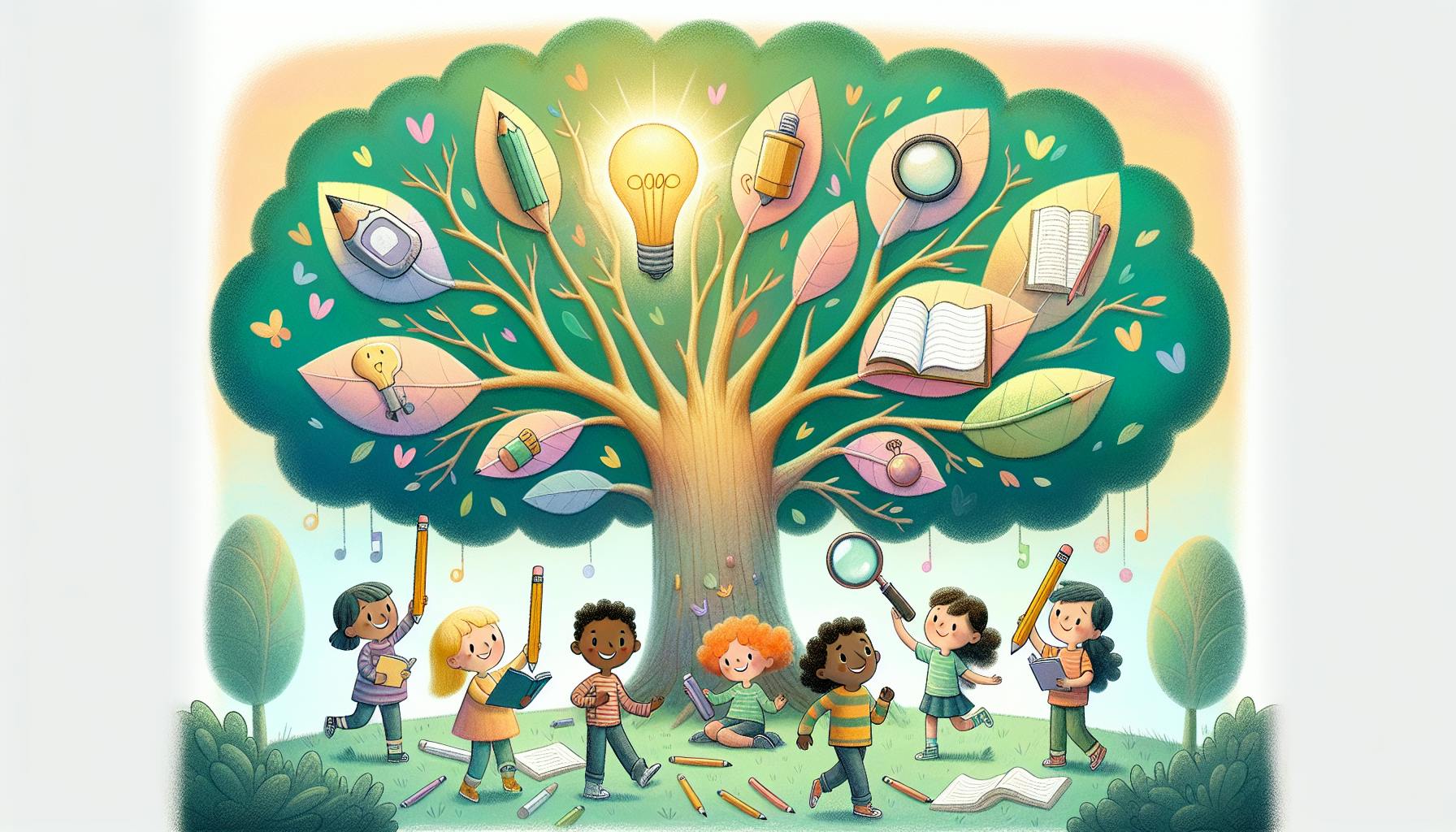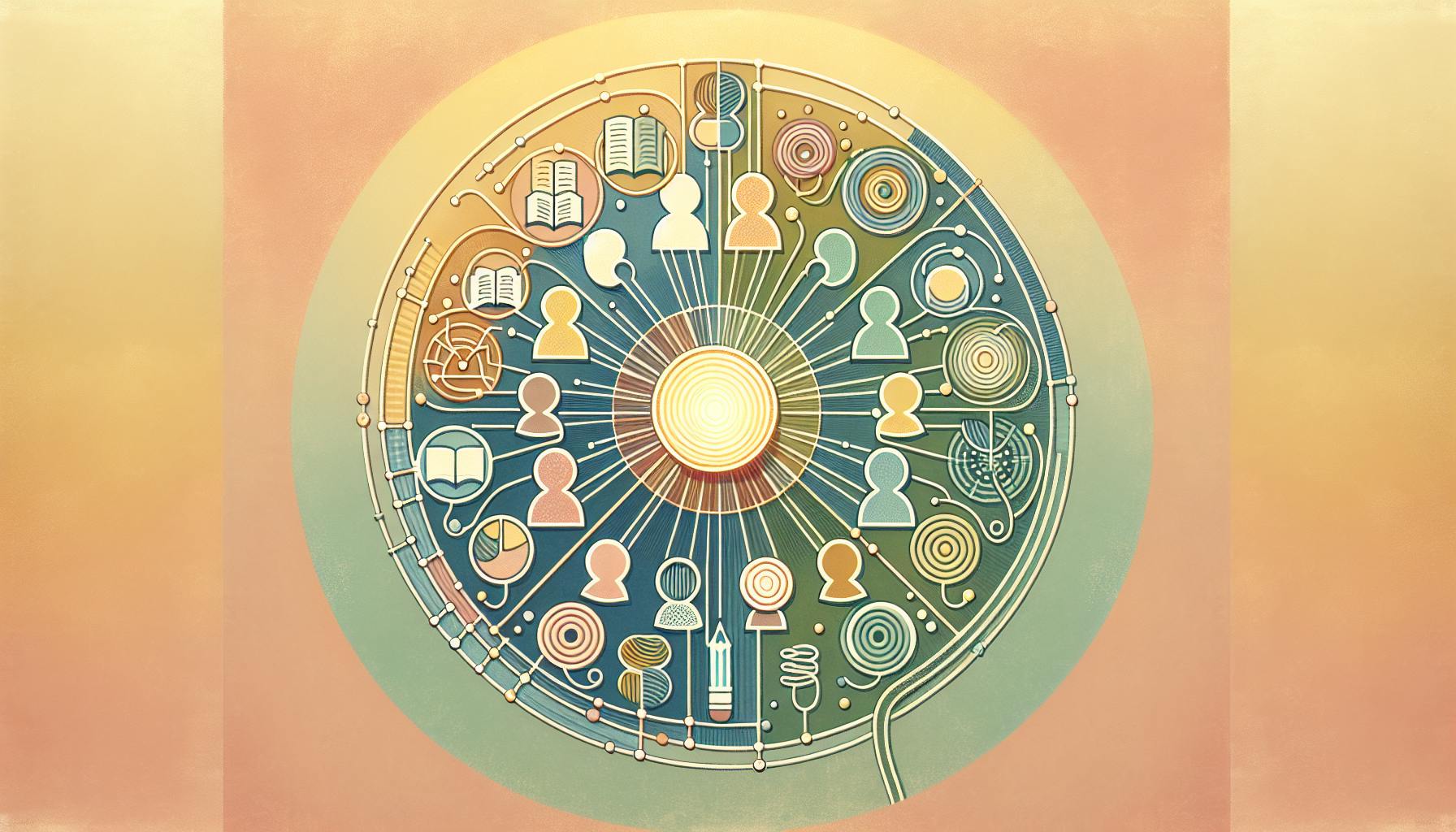Assessing student learning can be a major challenge for teachers.
This article provides a comprehensive guide to the best methods for tracking and enhancing learning through assessment.
You'll discover the key types of assessment, innovative digital tools and platforms, engaging assessment strategies to apply in the classroom, and how to maximize quizzes and games for data-driven teaching.
Introduction to Assessment in Education
Assessment is a critical component of effective teaching and learning. Teachers utilize assessments to gauge student progress, identify knowledge gaps, and adjust instruction accordingly. This section provides an overview of key assessment types and strategies to help teachers enhance learning outcomes.
Understanding the 4 Types of Assessment
There are four main forms of assessment:
- Formative assessments track learning throughout instructional units. Examples include exit tickets, classroom discussions, and practice quizzes. These provide real-time feedback to make instructional adjustments.
- Summative assessments evaluate learning at the end of an instructional unit. Common examples are unit tests, projects, and term papers. These assess mastery of standards.
- Diagnostic assessments gauge prerequisite skills and knowledge before starting new units. Pre-tests and skill inventories help determine student readiness.
- Self-assessments empower students to monitor their own learning. Reflection journals, rubrics, and progress trackers build metacognition.
Establishing Clear Learning Objectives
Well-designed assessments align to clear learning objectives. Teachers should:
- Identify essential standards and skills. Break these down into measurable and observable learning objectives.
- Connect objectives to appropriate assessment methods. Ensure congruence among goals, instruction, and evaluation.
- Share objectives with students. Communicate expectations and success criteria upfront.
With thoughtful planning, assessments provide the meaningful insights needed to enhance classroom learning.
What type of assessment should the teacher follow to monitor learning?
Formative assessment is ideally the best method for teachers to monitor student learning and progress. Formative assessment strategies focus on gathering actionable feedback in order to improve teaching methods and help students enhance their knowledge retention.
Here are some of the formative assessment strategies teachers can utilize:
- Self-assessment - Allow students to assess their own learning. This makes them more self-aware and boosts their metacognitive skills. Teachers can provide rubrics, checklists, or reflection questions to guide the self-assessment process.
- Diagnostic assessment - Administer a short quiz at the beginning of a topic to gauge students' prior knowledge. This allows teachers to shape their lesson plans according to the class' needs.
- Observations - Take note of students' verbal responses, participation levels, group interactions etc. during class activities. This provides insight into their grasp of concepts.
- Exit tickets - Get students to answer a few short questions or summarize key learnings before leaving class. Quickly assess where students stand.
- Progress monitoring - Use periodic quizzes, questions, or assignments to track learning over time. Identify learning gaps quickly.
- Peer/Group activities - Observe students explaining concepts to one another. Assess their ability to express understanding.
The key is to integrate these low-stakes formative assessment strategies seamlessly during teaching. This provides an ongoing feedback loop to enhance pedagogical practices and learning outcomes.
What are ways to use assessment to enhance learning?
Assessment is a critical component of effective teaching and learning. When used appropriately, assessment provides valuable insights into student progress and helps teachers adjust instruction accordingly. Here are some key ways that assessment can enhance learning:
Provide Evidence of Learning
Assessment enables teachers to gather tangible evidence of what students know and can do. By analyzing quiz scores, project work, presentations, and other assessments, teachers can pinpoint students' strengths and weaknesses. This allows them to provide targeted support in areas of need.
Inform Instruction
Quality assessments shed light on where students are struggling with concepts. Teachers can use this data to reteach material in different ways, emphasize certain topics, or provide additional practice on skills not yet mastered. Assessments help teachers identify gaps in learning to refine instruction.
Improve Long-Term Recall
Well-designed assessments promote retention and transfer of learning. Spacing out assessments over time, using testing effects, and providing cumulative exams are methods to boost long-term recall. Assessments reinforce what students have learned previously.
Reduce Test Anxiety
Low-stakes formative assessments accustom students to showing what they know in a relaxed environment. This helps ease test anxiety for high-stakes exams. Assessment exposure develops confidence and familiarity with test-taking.
In summary, purposeful assessment enables data-driven instruction tailored to students' needs. It also cements student understanding over time when implemented thoughtfully. Assessment and learning go hand in hand.
What types of assessments would teachers use to monitor progress?
Teachers have several options when it comes to selecting assessments to monitor student progress. Here are some of the most common types:
Progress Monitoring Assessments
Curriculum Based Measures (CBM)
- Assess student skill development in areas like reading, writing, and math
- Short, timed tests given throughout the year
- Help track progress and growth
Situational Assessments
- Assess students while they are working on actual class assignments and activities
- Progress recorded over time to note improvement
Job Tryouts
- Students complete a series of hands-on tasks
- Progress tracked across multiple attempts at the same type of task
- Useful for more complex skills that need practice
The key is to use assessments strategically to gather data and identify strengths, weaknesses, and growth areas. Assessments should provide insight into each student's needs so teachers can personalize instruction accordingly. Using a combination of assessment types allows for a comprehensive view of progress.
How do you assess the effectiveness of teaching and learning?
Teachers can utilize various methods to assess the effectiveness of teaching and learning in their classrooms. Here are some of the most common and useful assessment strategies:
Structured Interviews
Conducting one-on-one interviews with students is an excellent way to gain insight into their comprehension of course material, engagement levels, and overall learning experience. Teachers can use structured interviews with open-ended questions to uncover problem areas or successes.
Instructional Rating Surveys
Surveying students using rating scales allows teachers to quantify engagement levels, learning outcomes, and student perceptions of the course. Rating surveys provide measurable data that teachers can analyze to identify strengths and weaknesses.
Tests and Exams
While not always popular with students, tests and exams remain an essential assessment tool for gauging retention and understanding of key concepts covered in a course. Pre- and post-tests are especially useful for measuring learning gains.
Content Analysis
Reviewing instructional materials and student work products helps teachers evaluate the effectiveness of assignments, projects, and activities in relation to desired learning objectives. This allows refinement of course components to maximize outcomes.
Classroom Records
Keeping thorough records of attendance rates, assignment completion metrics, test scores, and participation levels provides teachers with concrete data to analyze the impact of their instructional methods over time.
In summary, utilizing a combination of assessment techniques, including interviews, surveys, testing, content analysis, and classroom records tracking allows teachers to fully evaluate and enhance the effectiveness of teaching and learning activities.
sbb-itb-bb2be89
Innovative Assessment Methods and Tools
Teachers today have access to an array of digital assessment tools that can enhance and streamline the assessment process. These tools provide actionable insights into student learning and allow teachers to gauge progress.
Summative Assessment Technology Tools
Summative assessments evaluate student learning at the end of a unit or course. They help determine whether learning goals have been achieved. Technology tools like Edulastic and ASSISTments support summative assessments by:
- Allowing teachers to create standards-aligned assessments.
- Providing auto-grading to save time.
- Generating detailed reports on student performance.
These insights allow teachers to identify learning gaps and refine instruction. Tools like Edulastic also have banks of pre-made summative assessments that teachers can customize.
Formative Digital Assessment Platforms
Formative assessments provide ongoing feedback to guide teaching and learning. Digital platforms like Socrative, Plickers, and Formative facilitate formative assessments by:
- Enabling quick checks for understanding through quizzes, polls, and more.
- Allowing students to demonstrate learning in interactive ways.
- Providing real-time analytics to immediately adjust instruction.
These platforms make it easy to gauge progress informally and frequently. Features like Plickers' card scanning system also bring an engaging gamified element.
In summary, today's assessment technology tools empower teachers to evaluate learning more efficiently while enabling data-driven instruction refinements.
Engaging Assessment Strategies Examples
Assessment is a critical component of effective teaching and learning. Teachers employ assessment strategies to gauge student progress, adjust instruction, and enhance learning outcomes. Selecting the right assessment methods is key to creating an engaging classroom environment where students can thrive.
Assessment for Learning Strategies in Primary School
In primary school classrooms, assessment for learning strategies allow teachers to monitor learning in real-time and provide actionable feedback to students. Some examples include:
- Exit tickets: At the end of a lesson, students complete a short quiz or reflection to demonstrate their understanding. This allows teachers to review gaps and adjust the next day's lesson plan accordingly.
- Student self-assessment: Having students evaluate their own learning and set goals promotes metacognition and self-directed learning. Teachers can provide rubrics and checklists to guide the process.
- Concept mapping: Students create visual maps showing connections between ideas/concepts. Teachers gain insight into student thinking and knowledge gaps.
- Think-Pair-Share: Students ponder a question individually, discuss ideas with a peer, then share out as a class. This provides opportunities for practice and reflection.
Assessment as Learning Activities in K-12 Education
Incorporating assessment directly into learning activities themselves makes evaluation seamless in K-12 classrooms. Examples include:
- Group projects: Students work collaboratively and peer assess one another’s contributions using a rubric. This builds teamwork and critical thinking skills.
- Online practice quizzes: Tools like quiz apps allow students to check understanding in a gamified way as they learn. Teachers can review class and individual student reports.
- Reflective journaling: Students maintain a journal, reflecting on their learning and posing questions. This supports metacognition, self-assessment, and personalized instruction.
- Debates: Students debate ideas in small or large groups. Teachers can assess skills like communication, critical thinking, and content mastery.
Overall, the key is choosing age-appropriate assessment strategies that provide meaningful data to inform teaching practices while keeping students engaged. Aligning evaluations tightly to learning objectives is critical for success.
Maximizing the Use of Quiz and Game Show Apps
Game-Based Learning with Kahoot! and Gimkit
Game-based learning platforms like Kahoot! and Gimkit can make assessments more engaging and provide instant feedback. Here are some key benefits:
- Kahoot! allows teachers to create fun quiz games that students play on their devices. The competitive element keeps students engaged throughout the assessment.
- Gimkit takes a similar approach but introduces more game mechanics. Students earn points for correct answers which they can use to unlock powerups and abilities. This further incentivizes participation.
- The real-time feedback provided through game dashboards allows teachers to quickly identify gaps in knowledge and adapt instruction accordingly.
- Game show formats lead to healthy competition among students, encouraging them to challenge themselves.
Here are some tips for effective implementation:
- Use game-based tools for formative assessments during a unit to gauge existing understanding. Reserve summative tests for end of unit evaluations.
- Design questions that evaluate comprehension of concepts rather than just memory recall. Add rich media like images and video for engagement.
- Offer bonus points/badges during games to keep motivation levels high. Consider granting small rewards to top performers.
- Review the class performance data after the game and discuss areas that need improvement. Provide clarification where needed.
Interactive Quizzes with Quizalize and Quizizz
Tools like Quizalize and Quizizz allow teachers to deliver interactive quiz assessments that feel like multiplayer games. Key advantages include:
- The quiz formats pose questions in creative ways, using memes, gifs, and other media to pique student interest.
- Students proceed at their own pace, revealing questions as they provide answers just like in video games. The reveal element creates intrigue.
- Teachers can track individual student performance in real-time with detailed analytics dashboards highlighting problem areas.
- Friendly quiz leaderboards celebrate top scorers in the class, helping foster healthy competition among students.
Best practices for optimal results:
- Use varied question formats like multiple choice, type answer, match pairs, etc. to accommodate different learning styles.
- Make assessments low-stakes by allowing multiple attempts. This encourages participation without pressure.
- Offer individualized feedback at the end summarizing student performance. Include guidance for improvement.
- Appoint student quiz masters each week to curate creative questions and incentivize leadership skills.
Game-based and interactive quizzes make learning stickier. They bring an element of fun into assessments while also generating rich analytics for teachers.
Data-Driven Decision Making in Classrooms
Assessment data provides invaluable insights that allow teachers to enhance their instruction and better support student learning outcomes. Edtech tools like Nearpod and Pear Deck seamlessly integrate assessments into lessons, capturing rich data that fuels data-driven teaching practices.
Analyzing Assessment Data with Edtech Tools
Education technology platforms are revolutionizing formative assessment by enabling teachers to easily create interactive lessons with built-in quizzes, polls, and other assessments. As students engage with these activities in real-time, the edtech tools instantly compile the results into useful analytics dashboards and reports. Teachers gain visibility into comprehension rates, knowledge gaps, and misconceptions.
For example, Nearpod's reports reveal how each student performed on every quiz and poll, highlighting struggling learners. Filters allow drilling down into performance by standard or question. This granular analysis empowers data-driven instructional adjustments targeted to individual students' needs.
Meanwhile, Pear Deck's analytics provide aggregated performance data, allowing teachers to quickly identify topics or questions where students struggled. The reports also showcase participation rates and engagement levels. Monitoring these metrics over time enables informed decisions about pacing, sequencing, and reteaching opportunities.
Reporting and Feedback with Digital Platforms
Streamlining the assessment feedback loop is critical for active learning. Edtech systems like Mote and Kaizena integrate seamless workflows for teachers to efficiently provide audio/video feedback tied to each student's work.
With Mote, teachers can record short voice comments as they review assignments, explaining strengths, noting areas for growth, and posing guiding questions. Students appreciate receiving the personalized feedback, which feels more supportive than scores or grades.
Kaizena enables teachers to insert comments directly into student documents, allowing context-specific praise or recommendations. Annotating work samples in this way provides meaningful feedback anchored to the learning objectives. Kaizena also generates student progress reports based on feedback trends over time.
Overall, purposefully leveraging education technologies' built-in analytics, reporting, and feedback features is key to maximizing the value of assessment data. Driven by those insights, teachers can continually enhance instruction to optimize learning outcomes.
Conclusion: Embracing Comprehensive Assessment Approaches
Assessment is a critical component of effective teaching and learning. By utilizing a balanced mix of assessment strategies supported by thoughtful technology integration, teachers can gain comprehensive insights into student progress.
Key takeaways include:
- Employing both formative and summative assessments provides a holistic view of learning and identifies potential gaps. Formative assessments like exit tickets, discussions, and practice quizzes inform daily instruction while summatives like unit tests, papers, and projects evaluate mastery.
- Assessment technology tools like self-grading quizzes, analytics dashboards, and automatic grading workflows save time while providing data to personalize instruction. However, human-led qualitative analysis still plays an invaluable role.
- Assessment goals should focus on supporting learning not just evaluating performance. Assessments that encourage metacognition and self-reflection empower student growth.
- A balanced assessment plan uses multiple measures like selected response, academic prompts, discussions, projects, and real-world applications. This variety caters to diverse learning styles and skills.
By regularly assessing student progress through diverse methods, teachers can target instruction, promote ownership of learning, and foster an environment where all students can reach their potential.


